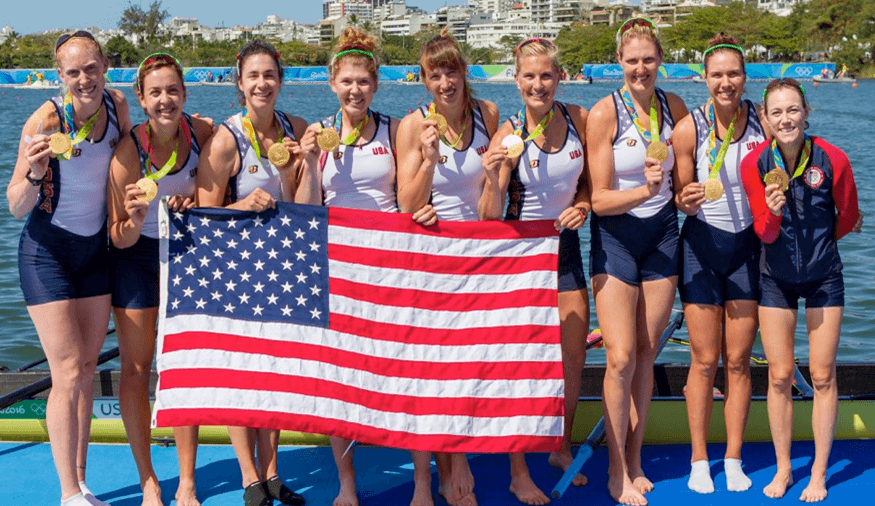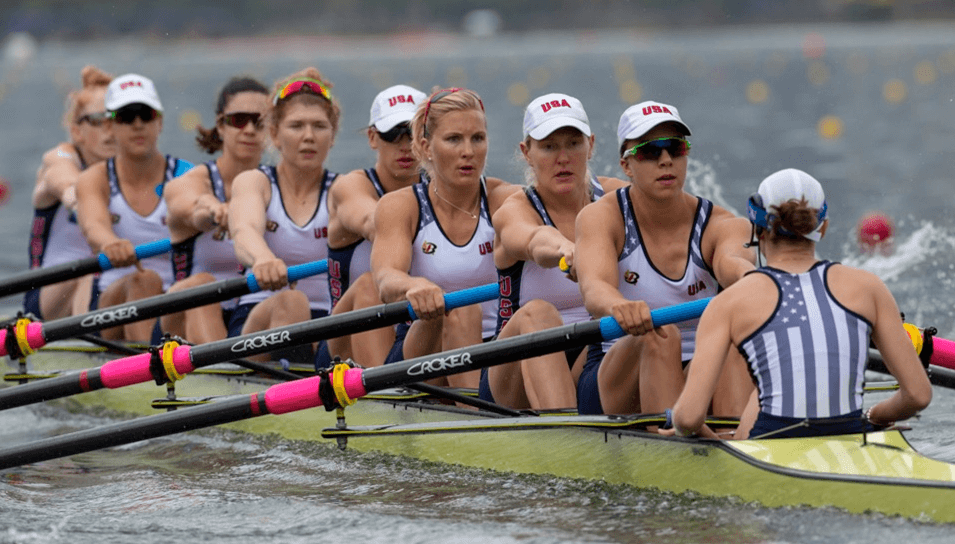
Authors: Dr. Pete Hammett, Guest Lecturer, Purdue University; Owner, Hammett Consulting
Amanda Elmore, Purdue University Alumna; 2016 Olympic Gold Medalist; Motivational Speaker; Program Coordinator, Lonza
The volume of information defining leadership — specifically, effective leadership — is remarkable. Organizations such as Harvard Business Review, The Center for Creative Leadership, Korn Ferry, Gallup and even Google have provided insightful research on what it takes to be an effective leader. This research has proven extremely valuable and served as the cornerstone for many leadership development initiatives.
Most research on leadership effectiveness is drawn from the viewpoint of what leaders themselves perceive as effective/critical attributes. Other research connects critical leadership competencies with the achievement of key business metrics, which makes perfect sense given that without realizing business results, there may not be an organization around to lead. That said, there is a viewpoint on effective leadership that is often overlooked — those who follow the leader. To this end, a question we would do well to consider is, “What do followers want in their leaders?”
In fall of 2019, I had the honor of presenting at a Purdue University leadership program. One of my co-presenters was Amanda Elmore, a 2016 Olympic Gold Medalist in Women’s Rowing. Her engagement with the participants at Purdue was amazing. She intertwined an experiential rowing exercise with a powerful message: lead by following. From our shared Purdue connection, Amanda and I formed a wonderful friendship. As I learned more about her Olympic experience, the answer to “What do followers want in our leaders?” became clear.
Here is Amanda’s story…
“Pushing through the pain” is a mantra most athletes know well. Seeking higher and higher levels of performance comes with a cost. It seems there’s always some part of your body that’s bruised, strained and healing. But summer of 2014, I pushed the pain too far — one morning I woke up with a massive back spasm, nearly paralyzed with pain. At that moment, my Olympic career changed forever.
To provide some background, I was introduced to rowing when I walked on to the Purdue University crew team in 2009. I immediately fell in love. I loved being outside, exerting myself, racing and constantly improving. I loved the strength, endurance, mental toughness and technical skill required. And not only did I love it, I was good at it. My athletic achievements instilled in me a noticeable confidence and I quickly became a team leader. Much of my understanding of leadership came from the few soundbites I often heard:
- Be confident and assertive.
- Prove yourself and win respect.
- Strong teams depend on strong leadership.
- If you want to make a difference, be an independent leader for others to follow.

I worked hard and hoped others would follow me. I strived to be perfect with a laser-focus on my individual journey. In 2014, my efforts were rewarded when I was invited to train at the Olympic Team Training Center in Princeton, NJ — the opportunity of a lifetime. The women athletes at the Olympic Training Center were amazing. They were tall, strong, naturally talented and fiercely competitive…and I wanted to be just like them.
Before long, I was racing with and against Olympic medalists. I pushed hard every day trying to impress my colleagues, but I quickly realized I was struggling. In the past, I relied on my natural talent, but now, I was up against athletes with more talent and more experience. Although I was exhausted, I kept pushing, desperate to improve. Eventually, I pushed myself too far and sustained what I believed to be a career ending injury.
As I laid in bed unable to move waiting for help, my mental toughness escaped me. All I could think of was that my work ethic and talent had failed me and that my aspirations of competing on the world stage were over. Little could I comprehend that my injury would end up being the best thing that could have happened to me.
Coming back from a major injury is perhaps one of the most humbling experiences I’ve encountered. Your mind tells you to get right back into your routine, but your body reminds you otherwise. Getting back to Olympic level training requires patience, determination and most of all, a change in strategy. Rather than a heads-down focus on my own journey, I began to pay attention to what my teammates were doing. I observed them rowing, warming up, what they ate, what they said in the locker room, how they handled injuries, how they spoke to each other and our coaches.
Soon, I realized these women I idolized weren’t perfect. They had injuries, bad workouts and insecurities just like me. From this insight I found humility. I discovered I didn’t have to rely on my own talent and strengths; I could lean on the examples I saw in my teammates. Finally, after about a year of following my teammates, I was back on track, getting stronger, and my boats were moving faster.
By following my teammates, I was more in tune with them, and I found the value of following resulted in building a stronger team. I learned acknowledging a person’s strengths is more effective than criticizing their weaknesses. I discovered that following embodies both trust and respect. And trust and respect are reciprocal. People liked rowing with me because they could tell I trusted and respected them, and they in turn trusted and respected me. Slowly, I realized I didn’t have to prove I was the best; I didn’t have to always make my voice heard; I didn’t have to make sure things were done my way.
Instead of leading, I followed. Instead of waiting for people to match me, I matched them. Instead of feeling jealous when I lost, I congratulated my colleagues for winning. I listened instead of criticized and supported instead of being stubborn. In short, I learned to follow, putting the goals of the team ahead of my personal aspirations.
In June of 2016, I was named to the U.S. Olympic Women’s Eight Rowing Team — a dream come true. However, my position on the rowing team was surprising. To understand why, you need a bit of technical insight on rowing. There are nine athletes in the boat of the Women’s Eight rowing team. The athlete in the back of the boat (the coxswain) faces forward to steer and encourage her eight rowers, all of whom are facing backwards. The most technical rowers sit in the front of the boat, the most powerful sit in the middle and the most consistent sit in the back. The athlete sitting closest to the coxswain is called the stroke seat, and she sets the rhythm as everyone watches her back and follows her.
After months and years of training with different combinations of women in each position, the fastest and most consistent lineup had me in the stroke seat, leading the pace, rhythm and energy of the crew. After all that time learning to follow, I was named to the only seat in the boat that can’t follow anyone. I was now objectively a leader, but with a different set of values than I had as a young athlete.
As I readied myself for our medal race, I recalled all I had learned in an instant…support my teammates’ strengths; trust the vision of the boat; push for the girls in the boat. I’m proud to say we brought home the Gold for USA. Not because we had the best nine athletes in the boat, but because we had the best team. All nine of us, as teammates and friends, did it together.
It’s been said that leadership is a relationship between those who aspire to lead and those who choose to follow. Reflecting on Amanda’s Olympic journey, powerful insights emerge that help answer the question of what followers want in a leader. Consider the following:
- We want a leader we can trust. Trust can be an elusive term to define because it’s used so casually without understanding what’s implied. In the simplest terms, trust is equal parts competence and character. Competence refers to a person’s ability to accomplish a task in a proficient manner. Character speaks to how a person interacts with others as they go about their day-to-day activities. Think about it this way…our competence is what ends up on our resume, and our character is what is talked about in our eulogy.
Amanda’s teammates and coaches clearly trusted her. By placing her in the position of leadership in the boat, they trusted her ability to set the pace. In seeing Amanda recover from her injuries and commit herself to what was best for the team, she proved the metal of her character was more valuable than the metal of any reward.
- We want a leader who cares. Leaders demonstrate how they care through empathy and humility. Empathy is recognizing and appreciating how others feel. Leaders who’ve developed empathy are not only able to express an understanding of another’s perspective but will behave in a manner that respects the feelings of others. Humility is understanding one simple truth — “It’s not about you.” Those who lead with humility put the needs and interests of their people/team ahead on their own.
Amanda showed great empathy when she became more in tune with her team, which helped her recognize and act on her teammates’ need for support and encouragement and to be heard and affirmed. And in Amanda’s own words, her recovery from a major injury was a humbling experience. Gaining this humility, Amanda willingly took on a ‘follower’ role and put the interests of the team ahead of her own aspirations.
- We want a leader who inspires us. I have a good friend who served as the executive director of a non-profit organization that works with middle and high school students. According to my friend, kids are driven to be involved in something that is important and makes a difference. Fascinating…it seems that what middle and high school kids are seeking is exactly that for which we are all looking — a leader who will help connect our work to a greater purpose and meaning.
Twice a year, a well-known medical device company brings its employees together to hear from patients who have benefited from the devices this company made. Stories are told of anniversaries celebrated, weddings attended and new children and grandchildren welcomed. At the end of the day, there’s not a dry eye to be found. Everyone from the maintenance crew to the research assistants are able connect their work to the stories just told.
Amanda and her teammates embodied the vision of the boat to be the best athletes they could be. She, her teammates and her coaches encouraged one another to “push for the girls in the boat”. And most of all, Amanda inspired those she humbly led to make their country proud. Well done, Women’s Eight.
In summary, we want a leader we can trust, who genuinely cares and who inspires us by helping connect our work with a greater purpose and meaning.:



